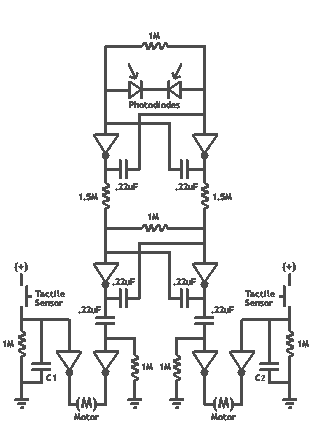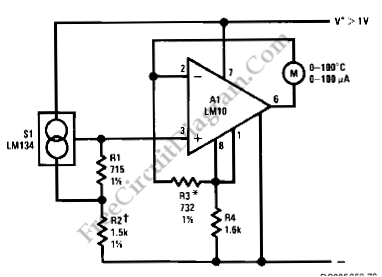
LM324 For Parking Sensor

The following circuit illustrates the use of the LM324 in a parking sensor circuit diagram. Features: When the obstacle is beyond 25 cm, none of the above LEDs will activate.
The LM324 is a quad operational amplifier that is commonly used in various electronic applications, including sensor circuits. In the context of a parking sensor circuit, the LM324 can be utilized to process signals from ultrasonic sensors or similar devices that detect obstacles. The circuit typically consists of the LM324 connected to multiple LEDs that serve as visual indicators for proximity alerts.
In a standard configuration, the ultrasonic sensor emits sound waves that reflect off nearby objects. The LM324 receives the echo signal and processes it to determine the distance to the obstacle. If the distance exceeds 25 cm, the output from the LM324 does not trigger any of the connected LEDs, indicating that the parking space is clear. Conversely, as the obstacle approaches and the distance decreases, the LM324 can be configured to activate one or more LEDs to provide visual feedback to the driver.
The circuit may include additional components such as resistors and capacitors for signal conditioning and stability. The choice of these components is critical to ensure accurate distance measurement and reliable operation of the sensor. The design may also incorporate a power supply circuit to provide the necessary voltage levels for the LM324 and other components.
Overall, the LM324-based parking sensor circuit serves as an effective solution for enhancing vehicle safety during parking maneuvers by providing timely feedback on nearby obstacles.The following circuit shows about LM324 For Parking Sensor Circuit Diagram. Features: When the obstacle is beyond 25 cm none of the above LEDs .. 🔗 External reference
The LM324 is a quad operational amplifier that is commonly used in various electronic applications, including sensor circuits. In the context of a parking sensor circuit, the LM324 can be utilized to process signals from ultrasonic sensors or similar devices that detect obstacles. The circuit typically consists of the LM324 connected to multiple LEDs that serve as visual indicators for proximity alerts.
In a standard configuration, the ultrasonic sensor emits sound waves that reflect off nearby objects. The LM324 receives the echo signal and processes it to determine the distance to the obstacle. If the distance exceeds 25 cm, the output from the LM324 does not trigger any of the connected LEDs, indicating that the parking space is clear. Conversely, as the obstacle approaches and the distance decreases, the LM324 can be configured to activate one or more LEDs to provide visual feedback to the driver.
The circuit may include additional components such as resistors and capacitors for signal conditioning and stability. The choice of these components is critical to ensure accurate distance measurement and reliable operation of the sensor. The design may also incorporate a power supply circuit to provide the necessary voltage levels for the LM324 and other components.
Overall, the LM324-based parking sensor circuit serves as an effective solution for enhancing vehicle safety during parking maneuvers by providing timely feedback on nearby obstacles.The following circuit shows about LM324 For Parking Sensor Circuit Diagram. Features: When the obstacle is beyond 25 cm none of the above LEDs .. 🔗 External reference





